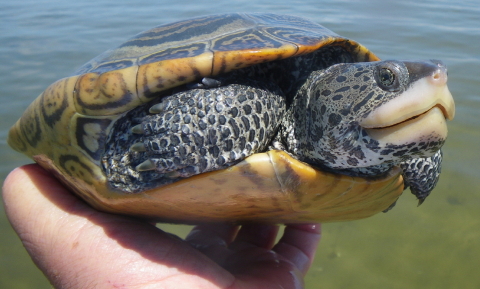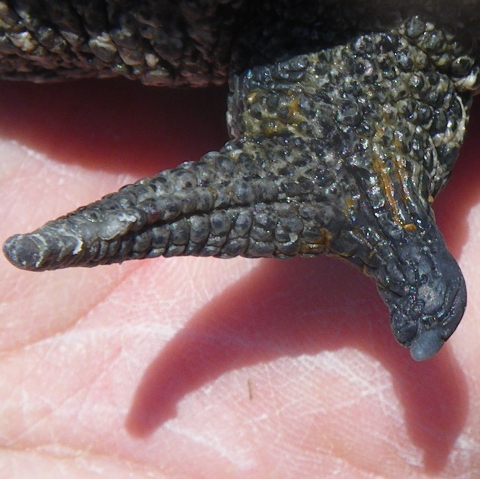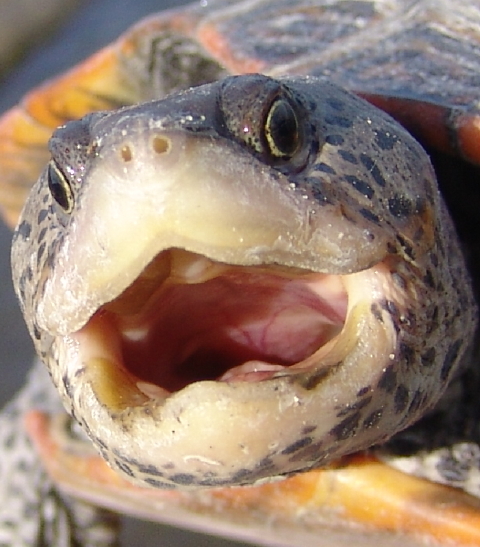
Female Followed by Two Male Painteds in Courtship Dance
The sun peekaboo’ed through the clouds late this morning, nudging the thermometer into comfortable 50s and low 60s. The Turtle Journal team bounced across one-lane backroads to a long abandoned bog on the SouthCoast of Massachusetts to investigate goings-on.

Male Spotted Turtle #1001
We found one female (#53) and one male (#1001) basking on the surface of the shallow channels of the spotted turtle mating aggregation. There was no ongoing mating activity among the spotted turtles, so we moved on. Sue Wieber Nourse went to observe the painted turtle mating site and Don Lewis headed off to check the status of salamander and frog egg masses. Being much swifter than us, Rufus did both by bounding back and forth between us.

Female Painted Turtle Followed by Two Males
At the main flooded bog channel, Sue was surprised to happen upon a hot romantic scene in progress. Two male painted turtles were engaged in a courtship dance with a large beautful female. The threesome were so ardently absorbed that they missed Sue’s approach.Â

Rufus Examines Romantic Painted Turtles
Sue scooped the trio into a net before they knew what was happening. Rufus checked closely to ensure the turtles were fine and to find out what they were up to.

Beautiful Female Painted Turtle and Male Suitors
The two male suitors are shallower (in girth) and considerably smaller than the gorgeous mature female whom Don knicknamed Helen in honor of Helen of Troy. She might not launch a thousand ships, but she could certainly move these males to fervent action.

Rufus Joins the Romantic Turtle Trio
Apparently “feeling the love,” Rufus insisted on joining the threesome. She lay down next to the turtles and gently rested her snout on Helen’s shell.

 Examining Romantic Painted Turtle Trio (Female Left)
We closely examined the specimens to document their health, as well as morphological differences between genders. One can readily determine the larger girth of the female painted turtle … to accommodate egg production. The males, as noted above, are smaller and shallower. Also, the female tail is thinner and smaller than the much larger and thicker male tails.

Comparing Male and Female Painted Turtle Claws
Beyond girth and tail, hints of gender can be derived from the length of claws (nails). Male claws (nails) are significantly longer than those of females, as clearly illustrated in the photograph above. The top turtle is the smaller male, the middle is the larger male, and the bottom is the female.

 Male Painted Turtle with Mauled Tail
The smaller male turtle had a severely mauled tail end that occurred long enough ago for it to have completely healed. Luckily for him, the shredded tail end stopped just below the anal opening, which in males is well beyond the protection of the carapace.

Rufus Bids the Romantic Trio Good-Bye
As we wrapped up processing and prepared to return the threesome back to their mating aggregation, Rufus insisted on sharing her love one last time. Well, we suppose that’s simply what turtle dogs do.

































